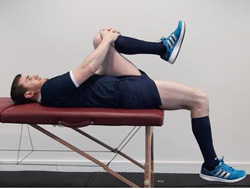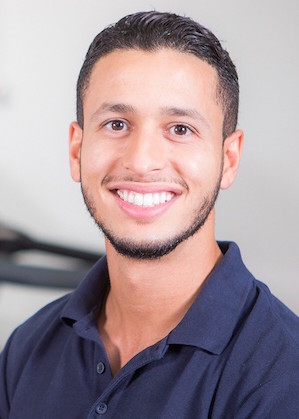Article reviewed and approved by Dr. Ibtissama Boukas, physician specializing in family medicine
Named after British orthopedic surgeon Hugh Thomas, the Thomas test is used by healthcare professionals to measure the flexibility of the hip flexor muscles. This article handles it in detail, and explains the various interpretations related to a positive test.
Definition and anatomy
The hip joint is a joint formed by the head of the femur which articulates with the acetabulum of the pelvis. It serves as the main link between the lower limb and the trunk.
The hip flexor muscles are a group of muscles having a point of attachment at the level of the hip, and which allow the movement of hip flexion. They also participate in other movements such as hip external rotation, hip abduction, knee flexion or extension.
Some of the major hip flexor muscles include:
- the iliopsoas (iliac psoas)
- the rectus femoris
- pectineus
- the slender
- the tensor fascia latae
- the sartorius
The Thomas test tests the flexibility of the muscles mentioned above. It should be known that an alteration of the amplitudes and the flexibility of the hip can be an underlying cause of musculoskeletal disorders such as low back pain, femoro-patellar syndrome (knee pain), hip osteoarthritis, psoas tendonitis, etc.
This retraction is often present in runners, dancers, gymnasts, or anyone complaining of hip stiffness (often in the anterior or oldest boy).
Procedure
- The patient is positioned in the supine position (on the back) on an examination table
- Using his arms, the patient flexes his knees as much as possible bringing them towards his chest. This avoids a hyperlordose at the level of lumbar spine
- The patient then lowers the tested limb to the end of the table so that it hangs down. The contralateral hip and knee (untested), meanwhile, are always kept in maximum flexion to stabilize the pelvis
- Using a goniometer, the angle of hip flexion is then measured, which corresponds to the flexibility of the hip flexors (in comparison with the healthy side). The angle of flexion of the knee is also measured to determine if there is contracture of the rectus femoris.
Interpretation & translation services
Thomas' test is negative when the subject's lumbar spine (lower back) and sacrum are able to remain flat on the table during the maneuver. The hip should be able to reach 10 degrees of extension, and the knee should be able to flex 90 degrees.
Conversely, a Thomas test is said to be positive when:
- The patient is unable to hold the lower back and the sacrum against the table (there is compensatory lumbar hyperlordosis)
- The subject's leg is not able to touch the bed (we then observe a flexum indicating a retraction or contracture of the hip flexor muscles)
- The knee is unable to reach a flexion of more than 80°
Depending on the final position of the leg tested, one can suspect a dysfunction of certain key muscles. For example, a knee that remains in extension suggests a contracture of the quadriceps (rectus femoris) muscle. A hip kept in flexion potentially indicates a lack of flexibility of the psoas muscle. If the leg remains in abduction, then we think of a retraction of the ilio-tibial band or the tensor fascia lata. In addition, an external rotation of the tibia can indicate a contracture of the femoral biceps (one of the muscles of the hamstring).
In short, depending on the results, the healthcare professional will decide whether it is relevant to further investigate via other clinical tests and/or medical imaging if necessary. He may also prescribe suitable exercises such as psoas stretches.
References
- https://www.physio-pedia.com/Thomas_Test
- https://www.pthaven.com/page/show/157779-thomas-test
- https://www.sandc.worldrugby.org/?module=77§ion=275&subsection=525
My name is Anas Boukas and I am a physiotherapist. My mission ? Helping people who are suffering before their pain worsens and becomes chronic. I am also of the opinion that an educated patient greatly increases their chances of recovery. This is why I created Healthforall Group, a network of medical sites, in association with several health professionals.
My journey:
Bachelor's and Master's degrees at the University of Montreal , Physiotherapist for CBI Health,
Physiotherapist for The International Physiotherapy Center


